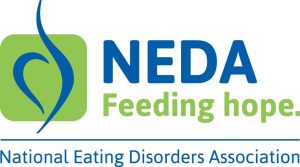Eating disorders are very real and on the rise among young children, especially girls, and even among adults. Here are some alarming statistics about young girls and body image that should make us mothers very concerned. But knowing what to look for and how to prevent it and help our girls is important to understand.

According to the National Eating Disorders Association (NEDA), here are some alarming statistics:
![]() 42% of 1st-3rd grade girls want to be thinner (Collins, 1991).
42% of 1st-3rd grade girls want to be thinner (Collins, 1991).
![]() In elementary school fewer than 25% of girls diet regularly. Yet those who do know what dieting involves and can talk about calorie restriction and food choices for weight loss fairly effectively (Smolak, 2011; Wertheim et al., 2009).
In elementary school fewer than 25% of girls diet regularly. Yet those who do know what dieting involves and can talk about calorie restriction and food choices for weight loss fairly effectively (Smolak, 2011; Wertheim et al., 2009).
![]() 81% of 10 year olds are afraid of being fat (Mellin et al., 1991).
81% of 10 year olds are afraid of being fat (Mellin et al., 1991).
![]() 46% of 9-11 year-olds are “sometimes” or “very often” on diets, and 82% of their families are “sometimes” or “very often” on diets (Gustafson-Larson & Terry, 1992).
46% of 9-11 year-olds are “sometimes” or “very often” on diets, and 82% of their families are “sometimes” or “very often” on diets (Gustafson-Larson & Terry, 1992).
![]() Over one-half of teenage girls and nearly one-third of teenage boys use unhealthy weight control behaviors such as skipping meals, fasting, smoking cigarettes, vomiting, and taking laxatives (Neumark-Sztainer, 2005).
Over one-half of teenage girls and nearly one-third of teenage boys use unhealthy weight control behaviors such as skipping meals, fasting, smoking cigarettes, vomiting, and taking laxatives (Neumark-Sztainer, 2005).

The the National Eating Disorders Association (NEDA) also reports, “Eating disorders are real, complex, and devastating conditions that can have serious consequences for health, productivity, and relationships. They are not a fad, phase or lifestyle choice. Eating disorders are serious, potentially life-threatening conditions that affect a person’s emotional and physical health. People struggling with an eating disorder need to seek professional help. The earlier a person with an eating disorder seeks treatment, the greater the likelihood of physical and emotional recovery.
In the United States, 20 million women and 10 million men suffer from a clinically significant eating disorder at some time in their life, including anorexia nervosa, bulimia nervosa, binge eating disorder, or EDNOS (Wade, Keski-Rahkonen, & Hudson, 2011).”
Eating disorders can be difficult to spot, but the clues below can provide hints that something is wrong. Here are some clues to look for in your children that might indicate a problem.

WATCH FOR someone who eats a limited number of “safe” lowfat or low calorie foods, plays with her food more than she eats it and/or has time consuming rituals such as cutting food into tiny pieces; anorexia nervosa may be the cause.
Sufferers also tend to feel cold all the time and have emaciated bodies, brittle hair and nails, a slow pulse and menstrual irregularities or not period at all. Although anorexics are most likely to starve to get thin, they may also purge or abuse laxatives, diet pills, diuretics and enemas.
IF YOU NOTICE secretive behavior such as trips to the bathroom after eating, or find food squirreled away in odd places or see great amounts of food suddenly go missing, bulimia could be the blame.
Women who have this disorder can sometimes be a little overweight. They also may have trouble conceiving and experience chest pains, esophageal irritation, bowel problems and eroded tooth enamel (the result of repeatedly vomiting stomach acids).

BE ALERT TO someone who is overweight and depressed and who eats uncontrollably. She may have binge-eating disorder. People with this condition don’t purge, exercise or fast to compensate for binges, but they still face health problems because of weight gain. If you know someone with eating disorder symptoms, urge her to get help as soon as possible. The earlier treatment starts, the more likely it is to succeed.









